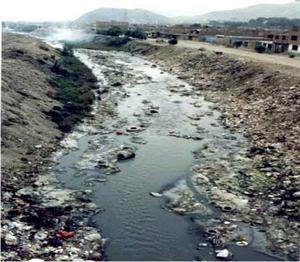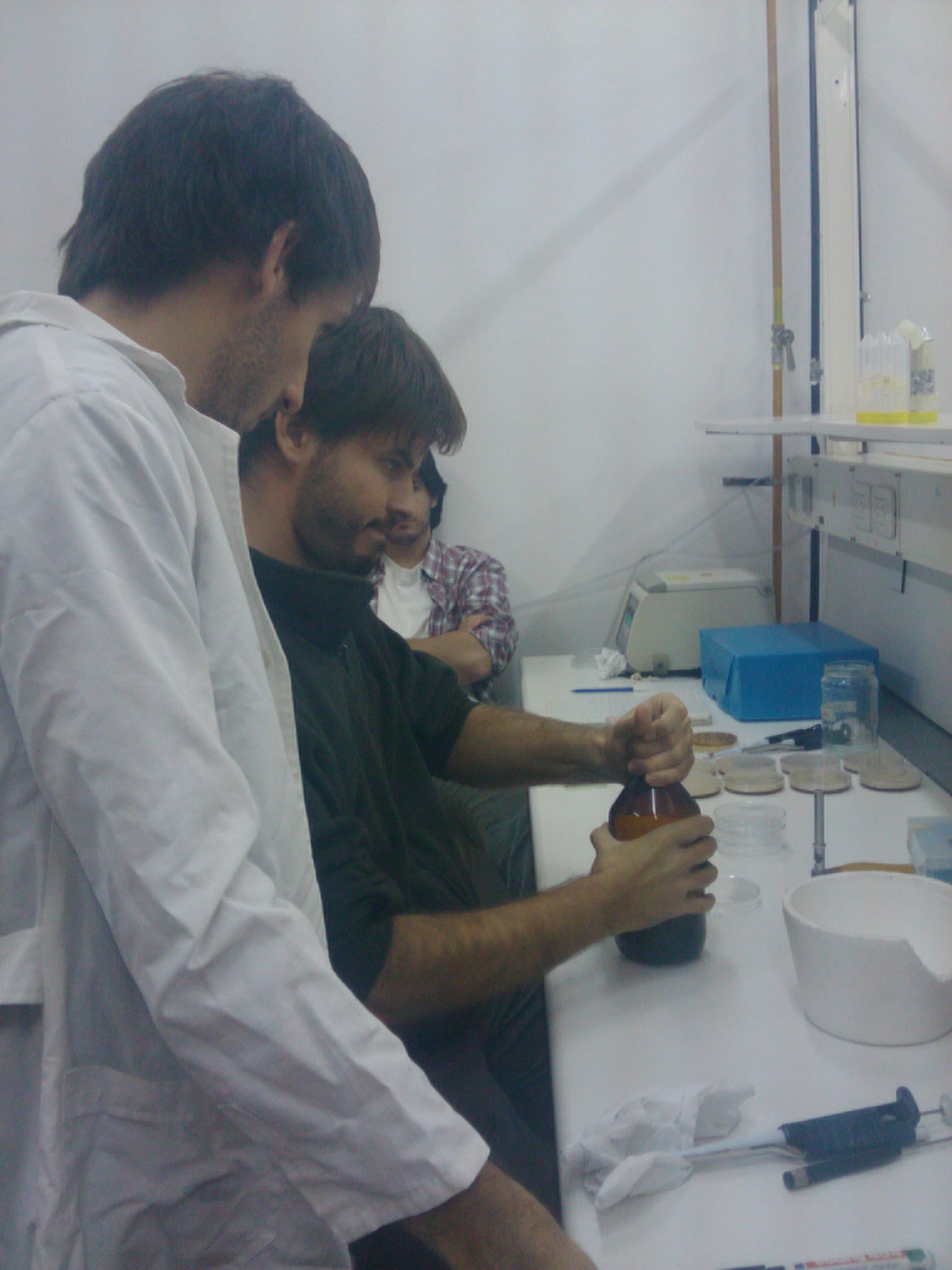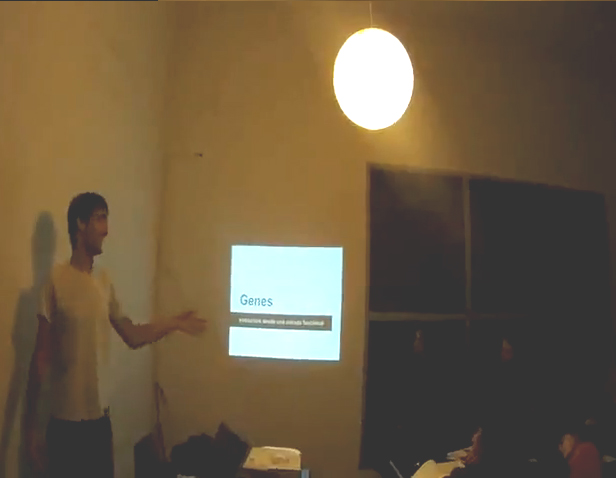Team:Buenos Aires/HP/GarageLab
From 2012.igem.org
Lucho.Moro (Talk | contribs) m (→Articles) |
Manugimenez (Talk | contribs) (→Impact in the media) |
||
| (12 intermediate revisions not shown) | |||
| Line 10: | Line 10: | ||
Now a days, the group has 22 active members and 5 projects with Non governmental organizations. | Now a days, the group has 22 active members and 5 projects with Non governmental organizations. | ||
| - | They are evolving in order to become an institution and in process of building a | + | They are evolving in order to become an institution and in process of building a proper infrastructure that would allow the resolution of high impact issues, as much as bigger workshops, hackatons, talks, conferences and developments. |
You can find out more about this creative and talented group of people at: http://garagelab.tumblr.com/ or their twitter http://twitter.com/garagelab | You can find out more about this creative and talented group of people at: http://garagelab.tumblr.com/ or their twitter http://twitter.com/garagelab | ||
| Line 20: | Line 20: | ||
{| | {| | ||
| | | | ||
| - | Of the several reunions that we had at Garage Lab, perhaps the most interesting was the one in which one of our members taught Synthetic Biology to a group of computer scientists and engineers through a game. The key question was not | + | Of the several reunions that we had at Garage Lab, perhaps the most interesting was the one in which one of our members taught Synthetic Biology to a group of computer scientists and engineers through a game. The key question was not "How does DNA works?" but "How can we make it work for us?" |
Through these talks we find out how people from different disciplines other than natural sciences come up with new ideas and points of view that challenge and make us rethink biology. | Through these talks we find out how people from different disciplines other than natural sciences come up with new ideas and points of view that challenge and make us rethink biology. | ||
| - | We are | + | We are planning to develop a game (either a computer game, a cards game or both) for spreading synthetic biology concepts and strategies among young and non specialized people |
| width="30%" align="center" | | | width="30%" align="center" | | ||
| Line 34: | Line 34: | ||
|} | |} | ||
| - | |||
| - | |||
| - | |||
| - | |||
| - | |||
| - | |||
| - | |||
| - | |||
| - | |||
| - | |||
| - | |||
| - | |||
| - | |||
== Future plans: Solving local problems == | == Future plans: Solving local problems == | ||
{| | {| | ||
| width="26%" | [[File:Bsas2012-Riachue.jpg|240px]] | | width="26%" | [[File:Bsas2012-Riachue.jpg|240px]] | ||
| - | | At the | + | | At the beginning of 2012, Garage Lab contacted our instructors to begin a productive relationship. They believe in the impact the use of Synthetic Biology's standard parts could have in Argentina, as a tool to help solve endemic issues and they want it to become part of their projects and society. Since then we had a formal presentation of the group and our main project at a Garage Lab Meeting and several of our team members have attended the group meetings often. |
Shortly after the first contact with Garage Lab, they came to our laboratory and together we planned on giving use to the parts that come in the Kit in order to assess a key problem in Buenos Aires, which is the contamination present at Riachuelo, a branch of Río de la Plata. | Shortly after the first contact with Garage Lab, they came to our laboratory and together we planned on giving use to the parts that come in the Kit in order to assess a key problem in Buenos Aires, which is the contamination present at Riachuelo, a branch of Río de la Plata. | ||
| Line 59: | Line 46: | ||
{| | {| | ||
| - | |As a iGEM team we are thrilled to be part of this competition, but our ultimate goal is to spread the word about this discipline that | + | |As a iGEM team we are thrilled to be part of this competition, but our ultimate goal is to spread the word about this discipline that is still ''new'' and ''unexplored'' here, not only to the general public but in the scientific community. Our collaboration with GarageLab will be a sort of testrun; a direct application of the ideas we've communicated about the Synthetic Biology Community and specifically the possibilities of iGEM developed free technology to help solve both big and small problems in our country. |
Therefore, we decided to explore the question Garage Lab presented us as a secondary project for after the Jamborees, to develop a way to identify and measure water contamination; such as heavy metals and maybe other noxious components at Riachuelo in the form of an unexpensive kit that could be distributed so that each community is able to periodically measure contamination levels in their area. '''The infrastructure is not present... '''' | Therefore, we decided to explore the question Garage Lab presented us as a secondary project for after the Jamborees, to develop a way to identify and measure water contamination; such as heavy metals and maybe other noxious components at Riachuelo in the form of an unexpensive kit that could be distributed so that each community is able to periodically measure contamination levels in their area. '''The infrastructure is not present... '''' | ||
| - | We aim to build a set of biosensors using | + | We aim to build a set of biosensors using parts from the Registry, more particularly the arsenic biosensor. We have already contacted Edinburgh 2006, Cambridge 2009 and SouthBend 2011 Teams regarding the procedures and experiences they have had related to arsenic detection using biobricks. We found an amazing support, ideas and encouragement from every team we contacted, including teachers and students. |
Latest revision as of 03:11, 27 October 2012

Garage Lab
|
GarageLab is a group of scientists, artists and engineers cofounded by Emiliano Kargieman and Dario Wainer in 2009 as a Workshop about Bioengineering at the University of Palermo. During these years, it grew up to be a multitasking group, by getting involved in subjects such as Neuro-robotics, Contamination assessment, Data Privacy and Management, Personalized Medicine, Public Information and Problematics of Open Innovation. Now a days, the group has 22 active members and 5 projects with Non governmental organizations. They are evolving in order to become an institution and in process of building a proper infrastructure that would allow the resolution of high impact issues, as much as bigger workshops, hackatons, talks, conferences and developments. You can find out more about this creative and talented group of people at: http://garagelab.tumblr.com/ or their twitter http://twitter.com/garagelab |
Learn and play session
Future plans: Solving local problems

| At the beginning of 2012, Garage Lab contacted our instructors to begin a productive relationship. They believe in the impact the use of Synthetic Biology's standard parts could have in Argentina, as a tool to help solve endemic issues and they want it to become part of their projects and society. Since then we had a formal presentation of the group and our main project at a Garage Lab Meeting and several of our team members have attended the group meetings often.
Shortly after the first contact with Garage Lab, they came to our laboratory and together we planned on giving use to the parts that come in the Kit in order to assess a key problem in Buenos Aires, which is the contamination present at Riachuelo, a branch of Río de la Plata. Several thousands of people live on the banks and nearby this highly polluted area which has been proven very hard to remediate from the environmental point of view, but also, a political challenge given its social and economic implications. |
| As a iGEM team we are thrilled to be part of this competition, but our ultimate goal is to spread the word about this discipline that is still new and unexplored here, not only to the general public but in the scientific community. Our collaboration with GarageLab will be a sort of testrun; a direct application of the ideas we've communicated about the Synthetic Biology Community and specifically the possibilities of iGEM developed free technology to help solve both big and small problems in our country.
Therefore, we decided to explore the question Garage Lab presented us as a secondary project for after the Jamborees, to develop a way to identify and measure water contamination; such as heavy metals and maybe other noxious components at Riachuelo in the form of an unexpensive kit that could be distributed so that each community is able to periodically measure contamination levels in their area. The infrastructure is not present... ' We aim to build a set of biosensors using parts from the Registry, more particularly the arsenic biosensor. We have already contacted Edinburgh 2006, Cambridge 2009 and SouthBend 2011 Teams regarding the procedures and experiences they have had related to arsenic detection using biobricks. We found an amazing support, ideas and encouragement from every team we contacted, including teachers and students.
| 
|
 "
"

